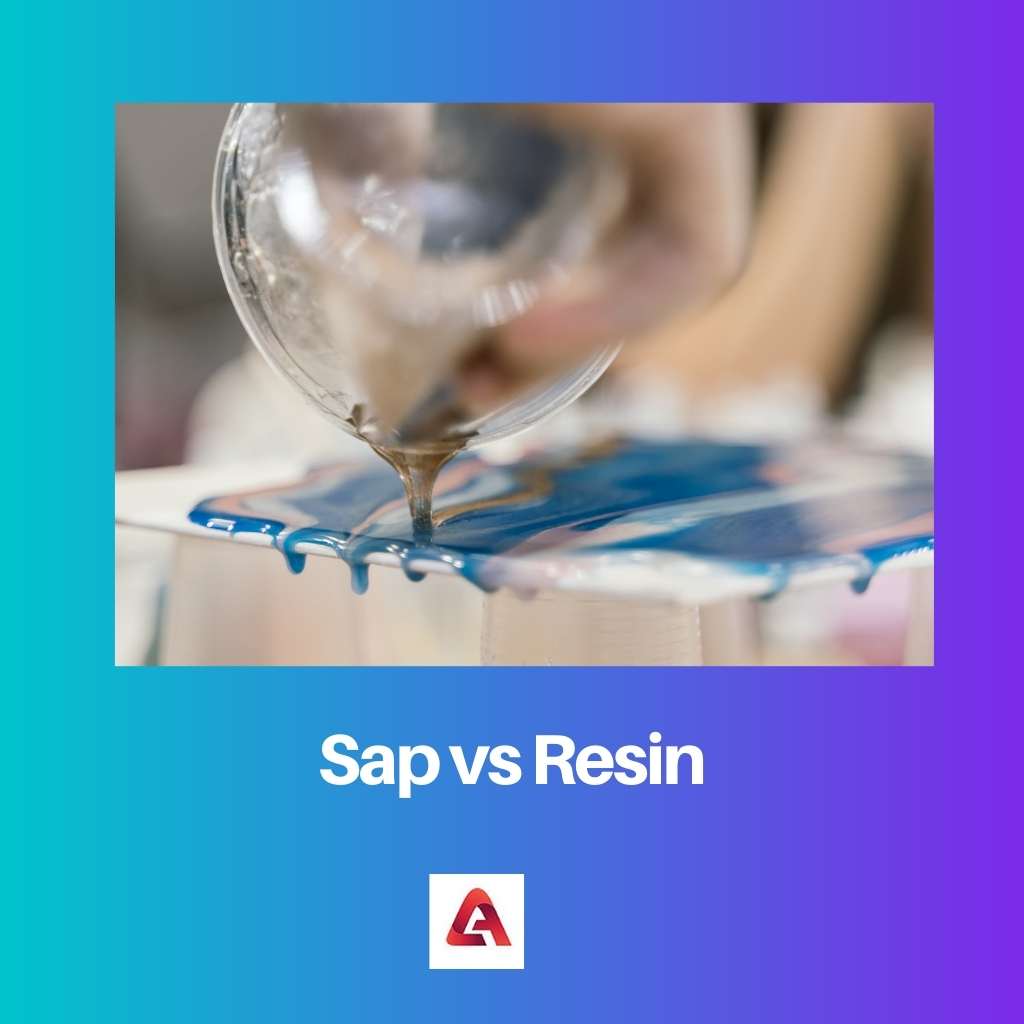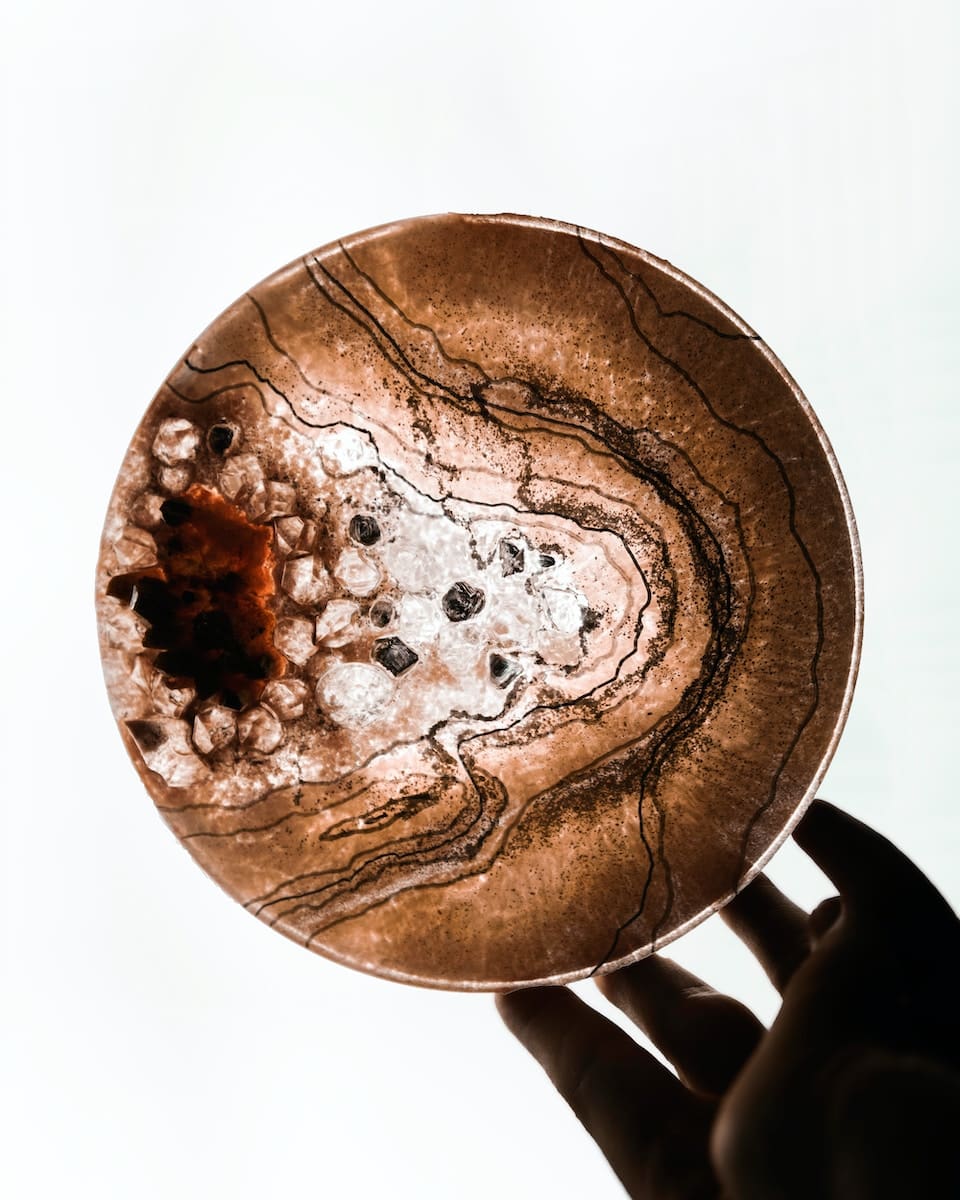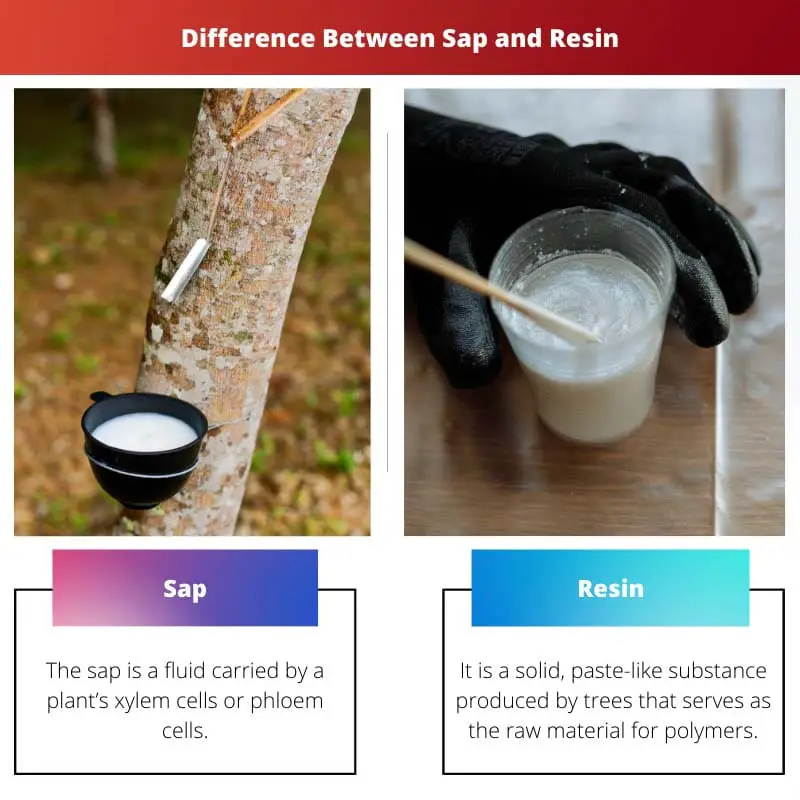Sap and resin, although related to plants, are very different. Plants secrete both and are highly beneficial. The juice is a viscous fluid with a viscosity even lower than honey.
Resin is a sticky, solid secretion that is highly sought after for its chemical qualities and applications.
Key Takeaways
- SAP (Semi-Automatic Pistol) is a type of firearm that uses recoil energy to load the next round.
- Resin is a sticky, organic substance secreted by plants, used in varnishes, adhesives, and other products.
- SAP and Resin are unrelated, with SAP being a firearm and Resin being a plant-derived substance.
Sap vs Resin
Sap is the fluid transported in the xylem cells of a plant or the sugary fluid in the phloem vessels that provides water and nutrients throughout the plant. Resin is a solid or highly viscous plant secretion that can harden, used for its chemical properties and in various industrial applications.

The sap is a fluid carried by a plant’s xylem and phloem cells. The phloem mostly comprises water, enzymes, glucose, and other elements.
Xylem sap contains liquid components, enzymes, and other substances. Juice can be in either fresh or fermented form.
Tree sap transports essential minerals, nutrients, and carbohydrates to all living sections of the tree.
Resins are viscous liquids that include organic solids and volatile terpene chemicals. Resins polymerize and harden under the correct circumstances, resulting in a copal.
Copal evolved from amber over thousands of years. Resin is a gummy substance with the appearance and feel of sticky, thick glue.
Comparison Table
| Parameters of Comparisons | Sap | Resin |
| Definition | It is a solid, paste-like substance that trees produce as the raw material for polymers. | Xylem and phloem cells of a plant |
| Colour | Yellowish | Red |
| Which tree can produce? | All trees | Only trees in the Pinaceae family, such as pine, fir, and cedar, can produce resin. |
| Where are they found? | An outer enclosure of the plant | Mainly as an adhesive and medication |
| Use | Used by the tree to transfer nutrients from one part to another. | Mostly as an adhesive and medication |
What is Sap?
The sap is the tree’s lifeblood. Trees use the sap in two ways. Firstly, saps circulate the nutrients in the soil’s water into every portion of the plant that exits through the leaf pores.
Leaf pores are microscopic holes in the skin of a plant’s leaves or stem that provides a slit with a changeable width, allowing gases to move in and out of the intercellular spaces.
When a tree draws water from the earth via its roots, it also draws mineral nutrients.
The second method is for sap to flow down the leaves into the roots and other sections of the tree. The juice contains sugar, or food, which the tree produces through photosynthesis in its leaves.
Photosynthesis is when green plants and other living things use sunlight to make food from carbon dioxide.
The presence of the green pigment chlorophyll and the creation of oxygen as a byproduct distinguishes photosynthesis in plants.
Apart from slathering cakes and muffins, tree sap has a variety of applications. Early immigrants learned from Native Americans how to tap a tree and transform maple tree sap into maple syrup and sugar.
Sap can be collected by plucking specific trees.
Because sap is the tree’s blood, it contains critical mineral components, hormones, and other nutrients. CO2 is emitted as sap travels through the pericarp of a tree.
What is Resin?
Resin is produced in the outer layers of cells of the trees. This layer is also known as the inner and outer bark. Another name for the outer bark is phloem.
It is visible that resin flows out of the bark of a resin-producing tree. The wax is designed to function similarly to a scab in that it seals the wound and protects it from the environment while it heals.
The resin is sticky and transparent. It is made up of substances released or deposited by the tree and can have high chemical characteristics.
Consequently, it is used for a variety of commercial and industrial purposes. Resin is used to make ink, lacquer, varnish, jewellery, fragrances, and various other industrial items.
Turpentine is also manufactured using resin.
Resins are viscous liquids that include organic solids and volatile terpene chemicals. Resins are plant products. It is not water-soluble and gets hardened when exposed to the air.
They serve no use in the plant’s vital functions. However, they are still frequently produced by woody plants. Even if a plant is injured, the bark of a tree, an herb, or the buds of a shrub can all have resin.
It thickens and solidifies the excess under the right conditions, culminating in copal.

Main Differences Between Sap and Resin
- The sap is the sugar present in the xylem and phloem cells of trees. Resin is a liquid substance found in the outer bark of plants.
- The sap is golden or whitish, viscous, and slimy. On the other hand, the resin is red, transparent, and hard.
- The sap is essentially a combination of sugar and water. Resin is defined as a very fluid material at first and hardens after being treated.
- All trees can produce sap to some extent, but resin is only found in the Pinaceae family of plants, which includes pine, fir, and cedar trees.
- The sap seals boats, food vessels, and many other objects. Resin is also commonly used to produce products like inks, lacquer, varnish, jewellery, and fragrances.

- https://link.springer.com/article/10.1007/BF00982102
- https://onlinelibrary.wiley.com/doi/abs/10.1046/j.1365-2486.1997.00096.x

An interesting read. For those interested in further exploration, the references are very resourceful.
Although, the information given has its benefits, it could have been more elaborative for readers looking for an in-depth understanding. A bit more elaboration would’ve been beneficial.
I appreciate the author for shedding light on the intricate details of the difference between Sap and Resin substantiated by valid refernces.
The post does not do enough justice to the topic at hand. It left me with numerous unanswered questions.
Bearing in mind the topic at hand, the post was quite lighthearted, the comments also display the vast spectrum of intellectual level of the readers.
Quite an interesting read, the comparisons and details are very informing.